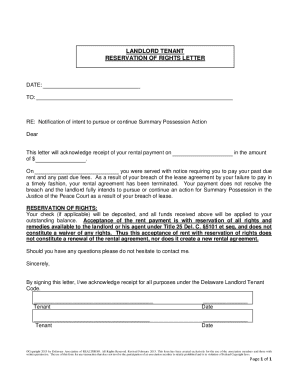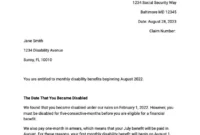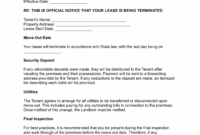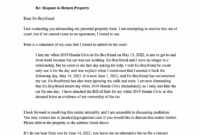Navigating complex situations, whether in insurance claims, contractual disagreements, or other legal scenarios, often requires careful communication to protect your interests. It is crucial to ensure that any actions or investigations you undertake are not misconstrued as an admission of liability or a waiver of your rights. This is precisely where a reservation of rights letter becomes an indispensable tool, serving as a formal declaration that you are proceeding without prejudice to your current or future legal standing.
Understanding how and when to use such a document can save significant complications down the line. It acts as a clear signal to all parties involved that while you may be engaging in certain activities, such as investigating a claim or discussing a dispute, you are not giving up any potential defenses or entitlements. This proactive approach ensures that your options remain open, allowing for a thorough and unbiased assessment of the situation without inadvertently limiting your legal avenues.
Understanding the Core Purpose of a Reservation of Rights Letter
A reservation of rights letter is fundamentally a protective instrument, most commonly used in the insurance industry but applicable in various other contexts. When an insurer receives a claim, they often need time to investigate its validity, coverage, and extent. During this investigation, if there’s any doubt about whether the policy actually covers the incident, or if there are potential exclusions, the insurer will issue a reservation of rights letter. This allows them to investigate the claim without waiving their right to later deny coverage based on policy terms, exclusions, or other conditions. Without it, simply investigating or defending a claim could be seen as an admission of coverage.
Beyond insurance, these letters are invaluable in contractual disputes. Imagine a scenario where one party believes another has breached an agreement. While negotiating a resolution or continuing to perform certain aspects of the contract, the aggrieved party might send a reservation of rights letter. This letter clearly states that by continuing to engage or negotiate, they are not waiving their right to pursue legal action for the alleged breach, nor are they agreeing that the contract remains fully in effect if a breach has indeed occurred. It preserves their ability to take further steps if an amicable resolution isn’t reached.
The overarching goal is to prevent the legal doctrine of “waiver” or “estoppel” from being applied against the sender. Waiver means voluntarily giving up a known right, and estoppel prevents someone from asserting a right or fact that is inconsistent with their previous conduct or statements. By sending a reservation of rights letter, you explicitly declare that your current actions do not imply a waiver of any rights or positions, thereby preventing others from claiming you’ve forfeited those rights through your conduct.

This legal maneuver ensures fairness and clarity. It allows parties to explore options, gather information, and engage in dialogue without the immediate pressure of irreversible legal consequences stemming from their preliminary actions. It fosters an environment where investigations can proceed and negotiations can occur, all while maintaining a clear understanding that legal positions are being actively preserved.
Key Scenarios Where You Might Need One
- An insurance company investigating a claim where coverage is uncertain or questionable.
- A party in a contract dispute wanting to negotiate or continue performance without waiving rights to later sue for breach.
- A landlord responding to a tenant’s alleged lease violation while reserving the right to evict.
- A company receiving a demand for payment that they dispute, but wish to continue discussions.
- Any situation where you are taking action that might be interpreted as an acceptance of liability or a waiver of your legal position.
Crafting Your Own Reservation of Rights Letter: Key Elements to Include
When you decide to draft a reservation of rights letter, clarity and precision are paramount. The document must leave no room for misinterpretation regarding your intentions. Begin by clearly identifying the sender and the recipient, along with the date. Immediately state that the purpose of the letter is to formally reserve all rights, remedies, and defenses concerning the matter at hand. Be specific about the “matter at hand” – reference the specific insurance claim number, contract, or incident that the letter pertains to.
Next, it is crucial to detail the specific rights you are reserving. This might include, but is not limited to, the right to deny coverage, the right to assert contractual defenses, the right to pursue damages, or the right to withdraw from negotiations. While a general reservation can be useful, a more specific listing of potential issues or concerns strengthens the letter. For instance, an insurer might list concerns about late notice, misrepresentations, or specific policy exclusions without making a final determination on any of them.
You must also include a clear statement that your actions, past, present, or future, in investigating, negotiating, or otherwise engaging with the matter, do not constitute a waiver of any of these reserved rights. This non-waiver clause is the heart of the reservation of rights letter and directly addresses the legal doctrines of waiver and estoppel. It explicitly informs the recipient that your involvement should not be construed as an acceptance of liability or an relinquishment of your legal standing.
Finally, it is always advisable to consult with legal counsel before sending such a document. While a reservation of rights letter template can provide a strong starting point, the specific language required can vary based on jurisdiction and the unique circumstances of your situation. A legal professional can ensure that the letter is legally sound, tailored to your needs, and effectively protects your interests without inadvertently creating new liabilities. The goal is to be both firm and legally defensible.
- Clear Identification: Include sender, recipient, date, and a specific reference to the matter (e.g., claim number, contract details).
- Explicit Statement of Reservation: Clearly state that all rights, remedies, and defenses are being reserved.
- Specific Rights or Concerns: Detail the particular issues or rights you are reserving, such as coverage defenses, contractual breaches, or potential liabilities.
- Non-Waiver Clause: Crucially state that your current or future actions do not constitute a waiver of any reserved rights.
- No Admission of Liability: Explicitly clarify that the letter is not an admission of liability or an acceptance of coverage.
- Call to Action (Optional): If applicable, you might request further information or specific actions from the recipient, while still reserving your rights.
Effectively utilizing a reservation of rights letter allows parties to proceed cautiously and strategically in ambiguous or contentious situations. It provides a legal shield, ensuring that steps taken to understand or address an issue do not inadvertently compromise one’s future legal options. This strategic communication is vital for maintaining flexibility and protecting your position as events unfold.
Therefore, whether you are an insurance professional, a business owner, or an individual facing a dispute, understanding and properly employing this type of letter can be a cornerstone of sound risk management and dispute resolution. Always remember that precision in language and a clear understanding of legal implications are key to its successful implementation.



